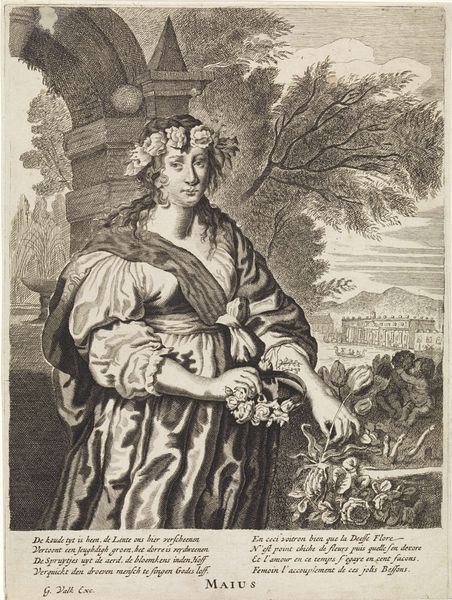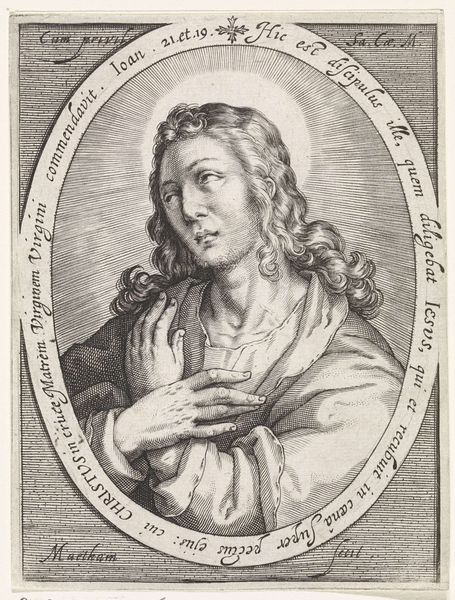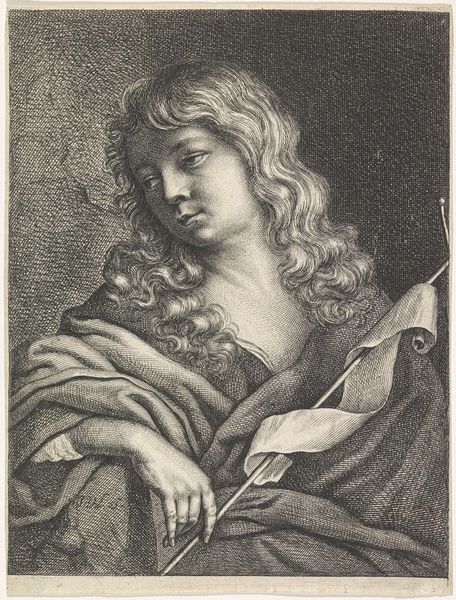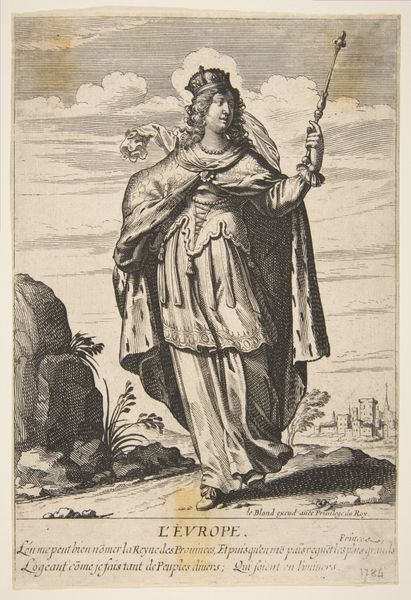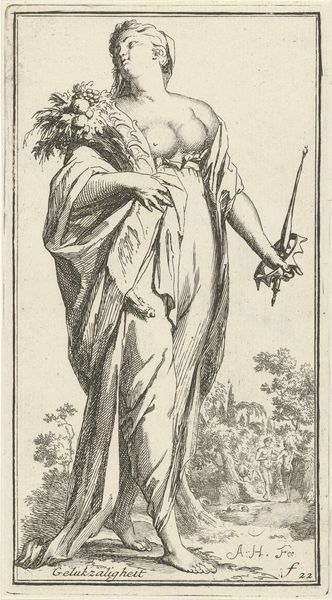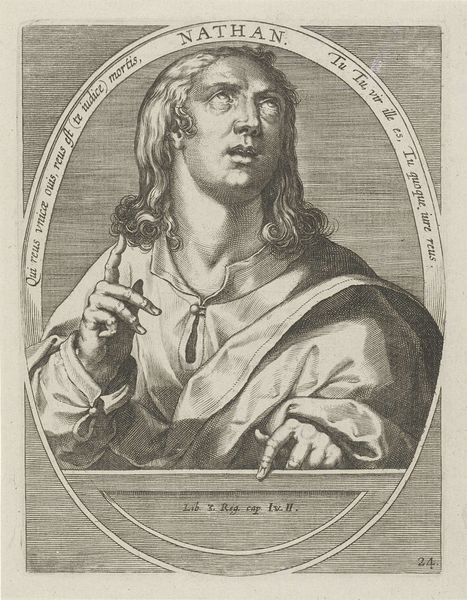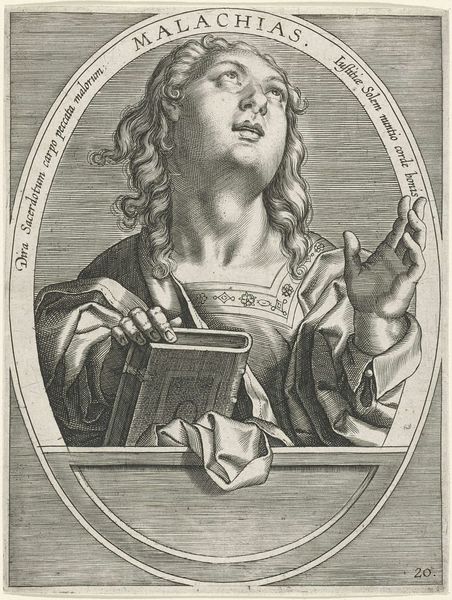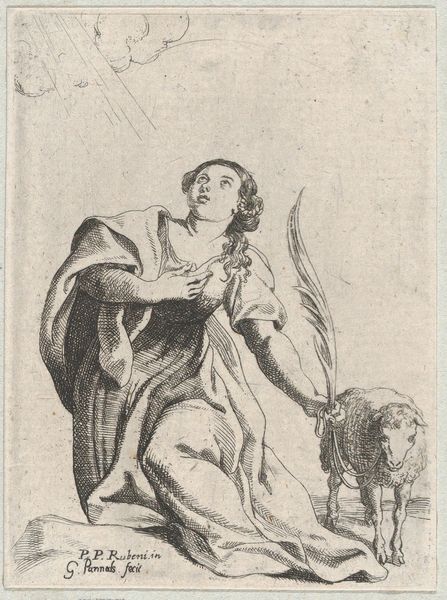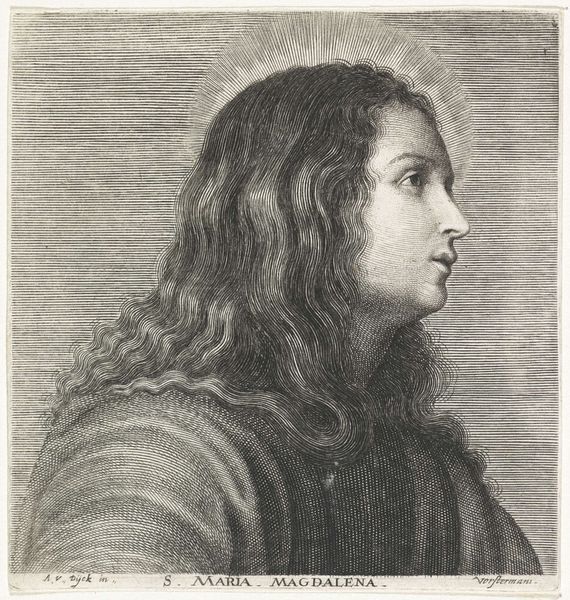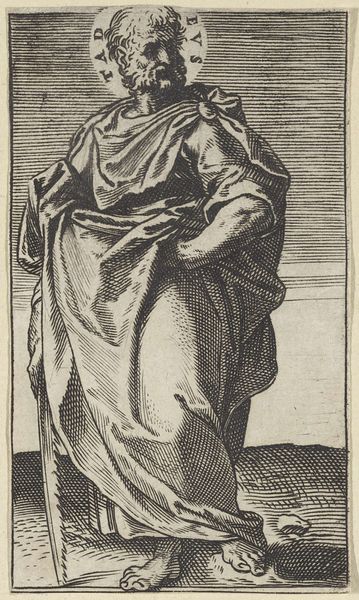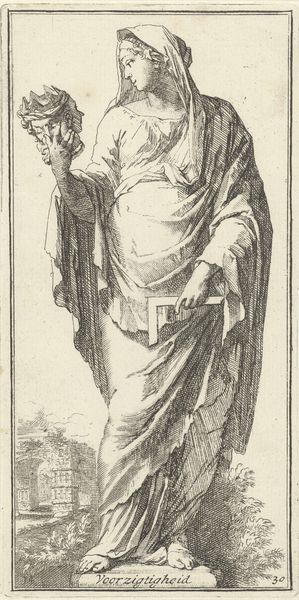
print, engraving
#
portrait
#
baroque
# print
#
old engraving style
#
figuration
#
history-painting
#
engraving
Dimensions: height 128 mm, width 90 mm
Copyright: Rijks Museum: Open Domain
Curator: Jan Lievens created this engraving, "Johannes de Evangelist," sometime between 1625 and 1674. What strikes you immediately about this portrayal? Editor: The stark contrast. The use of light and shadow carves out a very palpable form in such a limited grayscale palette. I am immediately drawn to the saint's peaceful but firm expression, his soft-looking drapery, the solidity of the book he is holding, and of course that eagle with its strange accoutrement. Curator: Indeed. The engraving places Saint John the Evangelist in a rather complex historical and cultural context. The Baroque era emphasized dramatic contrast and dynamism, characteristics we see here in the rendering of the figure and the eagle against the barely etched background. Notice that John’s youthful face and flowing hair contrasts sharply with the more severely drawn eagle, the symbol of John the Evangelist often seen in art as early as the Medieval period. The inscription S. Ioannes helps further clarify the historical narrative for the viewer. Editor: I'm compelled by the execution. Look at how Lievens achieved those tonal gradations using only line. It gives the figure a lot of visual weight but maintains an interesting level of surface tension. How does the portrayal fit into artistic conventions of the era? Curator: Lievens’s early career, particularly in Leiden, significantly shaped his approach. He moved between history painting and portraiture with ease, often emphasizing psychological depth, but his early exposure to the influences of Caravaggio via Utrecht gave his engravings such as this an unparalleled sense of realism and an attention to the use of light to draw attention to dramatic elements. These choices helped build a growing middle class interested in inexpensive and reproducible devotional prints during this period. Editor: I see that contrast echoed again—in the texture of the man’s soft features versus the almost crude mark-making describing the eagle. Despite the small scale, the texture and contrast imbue the work with the presence and solemnity we find in larger history paintings. Curator: It really encapsulates how socio-historical themes found their way into accessible formats. The relatively democratic format of the engraving helped to extend this theme to new and larger audiences in the domestic setting. Editor: Seeing this in person does draw you in. Such intricacy created through such sparse means. Curator: Absolutely. Its ability to compress so much context into a modest form offers viewers of every background both immediate appreciation and enduring depth.
Comments
No comments
Be the first to comment and join the conversation on the ultimate creative platform.
